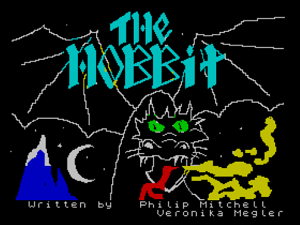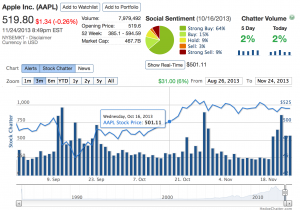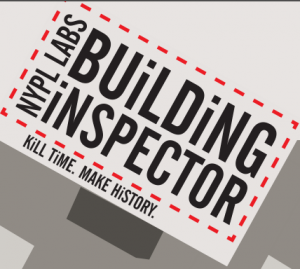On December 1st, 2011 Wikileaks began releasing The Spy files, a collection of documents from the intelligence contractors. These documents include presentations, brochures, catalogs, manuals and so on. There are hundreds of companies selling tools to anyone (country/telecom) who wants to spy on email, messaging and phones. I find fascinating what they should about the types of tools available to monitor communications, especially the interfaces they have designed for operatives. Here are some slides from a presentation by Glimmerglass Networks (click to download entire PDF).
Historical Software Collection: Internet Archive
The Internet Archive has started a Historical Software Collection. This is part of a larger Internet Archive Software Collection that has a number of collections. What is cool is that they have an in-browser emulator that allows you to play with historical software like Visicalc or Atari’s E.T. in the browser. This is a Javascript version of MESS called JSMESS. They are not just archiving the code, but ensuring that there are ways to try the software too.
I learned about this from David Rosenthal’s blog entry on In-Browser Emulation which is worth reading.
A Short History of the Highrise
The New York Times and the National Film Board (of Canada) have collaborated on a great interactive A Short History of the Highrise. The interactive plays as a documentary that you can stop at any point to explore details. The director, Katerina Cizek, on the About page talks about their inspiration:
I was inspired by the ways storybooks have been reinvented for digital tablets like the iPad. We used rhymes to zip through history, and animation and interactivity to playfully revisit a stunning photographic collection and reinterpret great feats of engineering.
For the NFB this is part of their larger Highrise many-media project.
Rap Game Riff Raff Textual Analysis
Tyler Trkowski has written a Feature for NOISEY (Music by Vice) on Rap Game Riff Raff Textual Analysis. It is a neat example of text analysis outside the academy. He used Voyant and Many Eyes to analyze Riff Raff’s lyrical canon. (Riff Raff, or Horst Christian Simco, is an eccentric rapper.) What is neat is that they embedded a Voyant word cloud right into their essay along with Word Trees from Many Eyes. Riff Raff apparently “might” like “diamonds” and “versace”.
HedgeChatter – Social Media Stock Sentiment Analysis Dashboard
HedgeChatter – Social Media Stock Sentiment Analysis Dashboard is a site that analyzes social media chatter about stocks and then lets you see how a stock is doing. In the picture above you can see the dashboard for Apple (APPL). Rolling over it you can see what people are saying over time – what the “Social Sentiment” is for the stock. I’m assuming with an account one can keep a portfolio and perhaps get alerts when the sentiment drops.
To do this they must have some sort of text analysis running that gives them the sentiment.
Building Inspector by NYPL Labs
The New York Public Library has another cool digital project called the Building Inspector. They are crowdsourcing the training and correction of a building recognition tool that is combing through old maps. You see a portion of a map with red dots outlining a building and you click “Yes” (if the outline is correct), “No” (if it is wrong), and “Fix” (if it is close, but needs to be fixed.)
They also have a neat subtitle to the project, “Kill Time. Make History.”
Student game world takes London maps into 3D space
Wired UK and some other sources have been blogging the Student game world that takes historic London maps into 3D space. The flythrough (YouTube) is from the winning entry to the Off the map collaboration/competiton that brought together maps from the British Library, Crytek’s CryENGINE, and the GameCity collaboration. Undergraduate teams used game technologies to model historic sites from British Library maps. The winning flythrough by Pudding Lane Productions feels like a recreation I would want to play in.
Research Records Stewardship Guidance Procedure
The University of Alberta has just passed a Research Records Stewardship Guidance Procedure which says that we “are responsible for the stewardship of the research records created, acquired, managed or preserved.” The procedure specifically says,
The Principal Investigator (PI) is responsible for the collection, maintenance, confidentiality, and secure retention of research records until such time as the University may assume responsibility for their management and preservation.
The good news is that we have excellent support in the Library for dealing with research records. We have the Education and Research Archive where we can deposit data. We also have staff in the Digital Initiatives unit of the Library who can help us develop research management plans.
I joined forces with Geoff Harder and Chuck Humphrey to give a presentation on Data Management Plans (my slides).
▶ Perseus Digital Library: Diachronic View
Perseus Digital Library Diachronic View is a YouTube video put together by Mihaela as part of a project we are working on as part of INKE. We started asking about the evolution of digital humanities interfaces which then led us to asking if there were projects that have been around long enough that their interfaces may have changed. This led us to the Perseus project which existed before the web. Using the Internet Archive and other sources we tried to reconstitute a history of major versions of the interface from the first HyperCard interface. We then created this video to show the evolution. We are now collaborating with Perseus to study the evolution of their interface, to preserve key screens, and to improve the interface for mobile devices.
NSA files decoded: Edward Snowden’s surveillance revelations explained

The Guardian just published a wonderful essay with embedded video on the NSA files decoded: Edward Snowden’s surveillance revelations explained. The essay provides an overview of what the Snowden revelations tell us about the NSA and its collection of metadata. The essay has short video clips embedded from interviews that play as you scroll down. There are panels with redacted slides from the NSA and there are panels with documents. The essay has 6 parts ending with “What Now?” which speculates on how the courts or Congress will respond.


